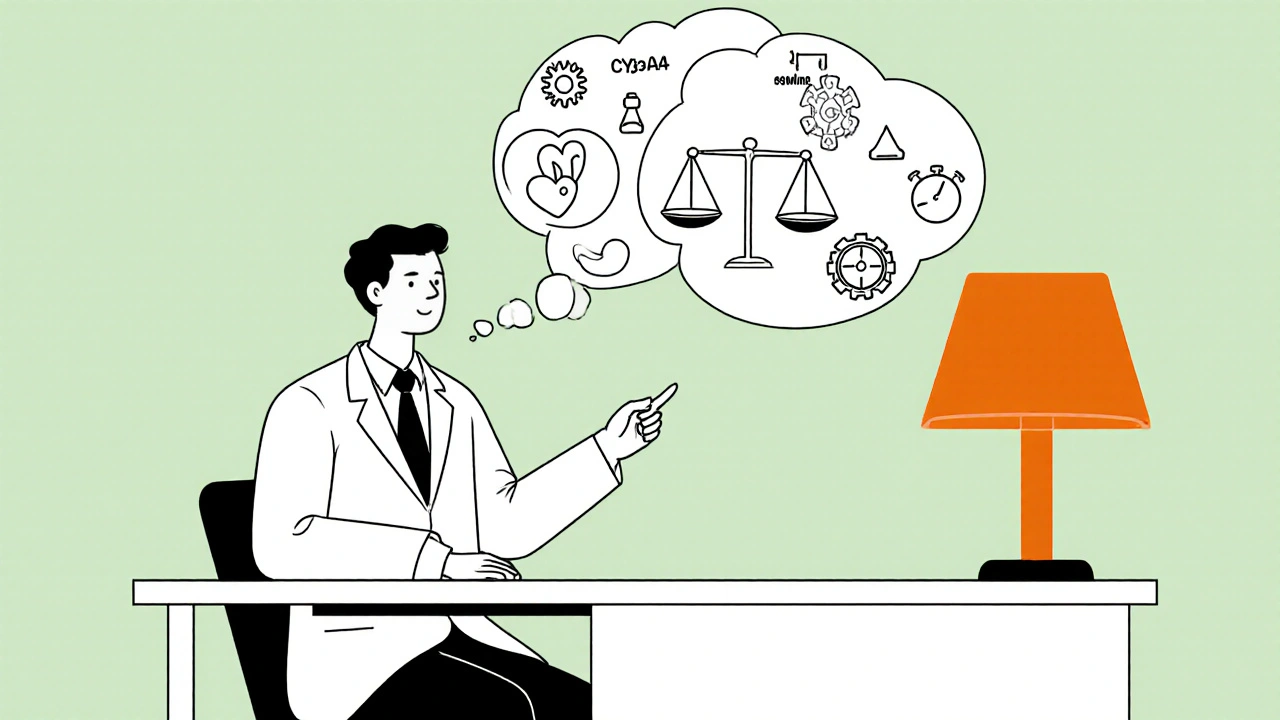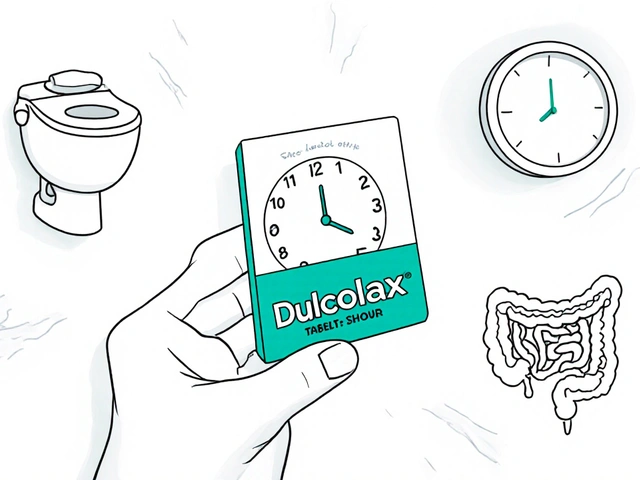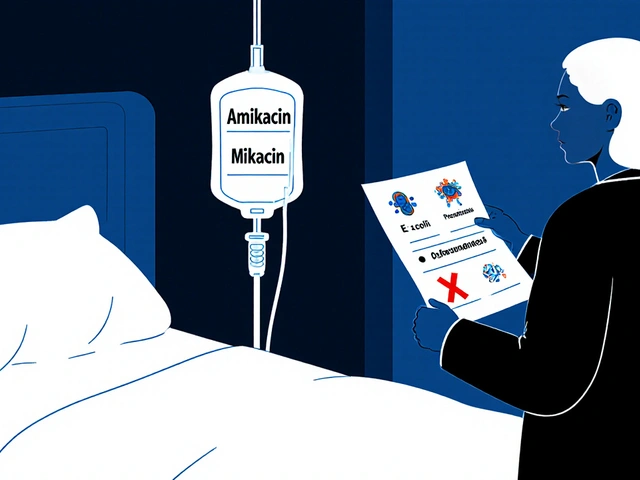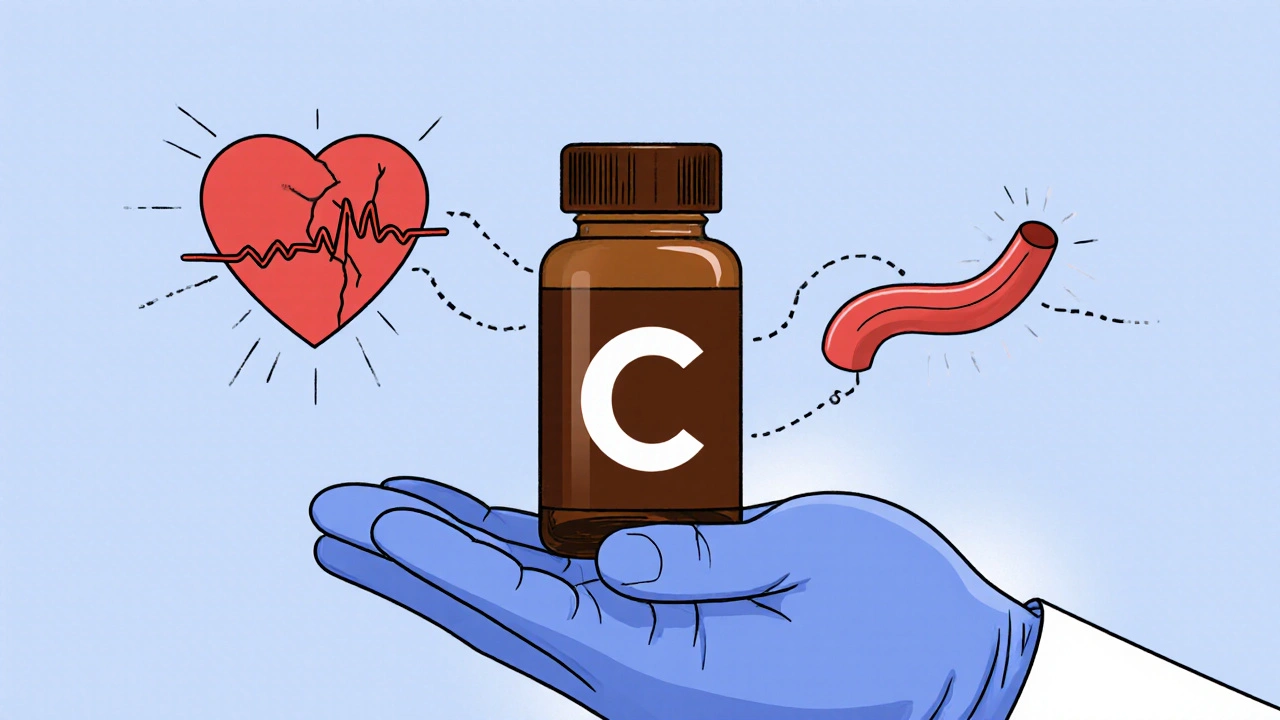Calcium Channel Blocker Comparison Tool
Which condition are you managing?
Special considerations:
Recommended Calcium Channel Blockers
| Drug | Class | Typical Dose | Half-life | Key Benefits | Key Risks |
|---|
Doctors often reach for Cardizem when treating high blood pressure or chest‑pain, but dozens of other drugs sit in the same class. Knowing how Cardizem stacks up against its peers can save you trips to the pharmacy, unexpected side‑effects, or costly dose adjustments.
What is Cardizem (Diltiazem)?
Cardizem is the brand name for diltiazem, a prescription medication that belongs to the calcium channel blocker (CCB) family. It works by relaxing the smooth muscle in blood‑vessel walls, which lowers resistance and eases the heart’s workload. In the United Kingdom it’s marketed under the same name, while the United States often lists it as a generic.
How does Cardizem work?
Diltiazem blocks L‑type calcium channels primarily in the heart and arterial smooth muscle. By reducing calcium influx, it slows the electrical conduction through the atrioventricular node and dilates peripheral arteries. The net effect is a drop in systolic and diastolic blood pressure and relief from angina symptoms.
When is Cardizem prescribed?
Physicians typically choose Cardizem for:
- Stable angina pectoris (chronic chest pain)
- Hypertension that has not responded to first‑line agents
- Rate control in atrial fibrillation or flutter
It comes in immediate‑release tablets, extended‑release capsules, and injectable forms, giving clinicians flexibility across inpatient and outpatient settings.
Comparing Cardizem to other calcium channel blockers
The CCB class splits into two sub‑groups: dihydropyridines (like amlodipine) that primarily relax vessels, and non‑dihydropyridines (like verapamil) that also affect heart rate. Cardizem sits in the middle as a non‑dihydropyridine but with a milder effect on cardiac conduction than verapamil.
| Drug | Class | Typical Dose (adult) | Half‑life | Main Uses | Notable Pros | Notable Cons |
|---|---|---|---|---|---|---|
| Cardizem (Diltiazem) | Non‑dihydropyridine CCB | 30‑120 mg daily (ER) | 3-5 h (IR), 6-9 h (ER) | Hypertension, angina, rate control | Balanced vascular + cardiac effect; good for patients needing both | Moderate drug‑interaction load (CYP3A4) |
| Amlodipine | Dihydropyridine CCB | 5‑10 mg daily | 35-50 h | Hypertension, chronic stable angina | Once‑daily dosing; minimal heart‑rate effect | Peripheral edema common; less useful for rate control |
| Verapamil | Non‑dihydropyridine CCB | 80‑240 mg daily (ER) | 3-7 h | Arrhythmias, angina, hypertension | Strong negative‑inotropy; excellent for atrial‑fibrillation rate control | Can cause bradycardia, constipation; many drug interactions |
| Nifedipine | Dihydropyridine CCB | 30‑60 mg daily (ER) | 2-5 h | Hypertensive emergencies, Raynaud’s phenomenon | Rapid onset; effective for acute BP spikes | Flushing, headache; not ideal for chronic angina |
| Felodipine | Dihydropyridine CCB | 5‑10 mg daily | 11-16 h | Essential hypertension | Long half‑life; smooth blood‑pressure control | Peripheral edema; dose titration needed |
| Nicardipine | Dihydropyridine CCB | 20‑40 mg PO TID (or IV infusion) | 2-4 h | Severe hypertension, cerebrovascular protection | IV formulation for rapid control; neuroprotective potential | Headache, reflex tachycardia; needs careful monitoring |
The table highlights where Cardizem shines-its dual action makes it a go‑to for patients who need both blood‑pressure reduction and heart‑rate moderation. If you only need vessel dilation, a dihydropyridine like amlodipine might be simpler.
Deep dive into each alternative
Amlodipine
Amlodipine’s long half‑life means you can take it once a day without worrying about peaks and troughs. It’s especially friendly for elderly patients because it rarely slows the heart. The downside? Swelling in the ankles is reported in up to 15 % of users, which can be a deal‑breaker for those with heart‑failure risk.
Verapamil
When a patient’s primary problem is a rapid heart rhythm, verapamil often wins. Its strong effect on the AV node can restore normal rhythm in atrial fibrillation. However, the same potency can cause unwanted bradycardia or a drop in cardiac output, so doctors monitor blood pressure and pulse closely.
Nifedipine
Nifedipine is the “quick‑action” kid on the block. Emergency departments love it for hypertensive crises because the drug works within minutes when given orally or intravenously. Chronic use can lead to headaches and a “flushing” sensation as blood vessels dilate suddenly.
Felodipine
Felodipine’s gentle, sustained release smooths out the daily blood‑pressure curve. It’s a solid choice for people who have trouble remembering multiple doses. Side‑effects mirror those of other dihydropyridines-namely ankle edema and occasional dizziness.
Nicardipine
The IV form of nicardipine lets clinicians titrate blood pressure down minute‑by‑minute, a feature useful after stroke or during neurosurgery. Oral nicardipine is less popular but still effective for moderate hypertension. Watch for reflex tachycardia, especially when dosing rapidly.
Choosing the right option for you
Picking a CCB isn’t a one‑size‑fits‑all decision. Consider these factors:
- Cardiovascular profile: If you need both vasodilation and a modest heart‑rate slowdown, Cardizem is a balanced pick.
- Drug‑interaction risk: Cardizem is metabolized by CYP3A4, so avoid strong inducers (e.g., rifampin) or inhibitors (e.g., ketoconazole) unless your doctor adjusts the dose.
- Kidney or liver function: Diltiazem’s clearance drops in severe hepatic impairment; dose reduction may be required.
- Side‑effect tolerance: If ankle swelling is a concern, lean toward verapamil or diltiazem over dihydropyridines.
- Convenience: Extended‑release Cardizem or amlodipine allow once‑daily dosing-ideal for busy lifestyles.
Always discuss the full medication list with your clinician. Even over‑the‑counter supplements like St John’s wort can tip the CYP3A4 balance.

Common side effects and safety notes
Across the CCB family, the most frequent complaints are headache, flushing, and peripheral edema. Cardizem adds a modest chance of constipation (around 3 %) and, rarely, liver‑enzyme elevation. If you notice a sudden drop in heart rate below 50 bpm, dizziness, or worsening shortness of breath, contact your doctor right away.
Pregnant or breastfeeding patients should only use these drugs when the benefits clearly outweigh risks. Diltiazem passes into breast milk in small amounts; the decision rests with the prescriber.
Frequently Asked Questions
Frequently Asked Questions
Can I switch from Cardizem to amlodipine without a doctor?
No. Even though both are calcium channel blockers, they work differently and have distinct dosing schedules. A doctor can guide a safe taper and start‑up plan.
Does Cardizem interact with statins?
Some statins (especially those metabolized by CYP3A4, like simvastatin) can increase diltiazem levels. Your physician may lower the statin dose or pick a different lipid‑lowering agent.
Is Cardizem safe for people with asthma?
Generally yes, because non‑dihydropyridines have minimal effect on bronchial smooth muscle. However, high doses can cause mild bronchoconstriction, so monitor respiratory symptoms.
How quickly does the extended‑release Cardizem start working?
Therapeutic blood‑pressure reduction is usually seen within 2-3 days, with full steady‑state effect after about a week of daily dosing.
Can I take Cardizem with grapefruit juice?
Grapefruit juice inhibits CYP3A4 and can raise diltiazem concentrations, increasing the risk of low blood pressure or bradycardia. It’s safer to avoid large amounts.
The brand Cardizem remains a go‑to option for many doctors because it blends vascular relaxation with modest heart‑rate control, making it a versatile choice when a single drug needs to hit two targets. Yet the alternatives listed above each bring a niche strength-whether it’s once‑daily convenience, rapid‑action control, or powerful rhythm management. By weighing your health goals, existing meds, and lifestyle, you and your clinician can land on the pill that fits best.





Comments
12 Comments
Rajesh Singh
Everyone keeps harping on how versatile Cardizem is, but they forget to stress the ethical duty of patients to read the fine print. It’s not just a pop‑pill; it meddles with your liver enzymes and can tango with a slew of other meds. If you’re on a statin or an antifungal, you better double‑check the interaction potential before you start. Ignorance isn’t bliss when your heart decides to skip a beat because of a careless prescription. Take responsibility and ask your doctor for the full interaction chart.
Albert Fernàndez Chacón
Cardizem’s balanced vascular and cardiac effects make it a solid choice when I need both BP control and rate reduction. The half‑life is practical for twice‑daily dosing if you go IR, and the ER version smooths out peaks. Compared to amlodipine, you trade off daily convenience for the ability to manage atrial fibrillation. Keep an eye on CYP3A4 interactions, especially with certain antibiotics. Overall, it’s a respectable tool in the hypertension toolbox.
Drew Waggoner
It’s maddening how many clinicians prescribe Cardizem without flagging the constipation risk to patients. A third of folks never even notice until they’re uncomfortable and think it’s something else. The drug‑interaction load can silently amplify other meds, turning a routine regimen into a minefield. I’ve seen people end up in the ER because their blood pressure plummeted after a grapefruit juice binge. The healthcare system should be more transparent about these subtle pitfalls.
Mike Hamilton
When you weigh the pros and cons of a calcium channel blocker, you’re really contemplating how much control you want over the dual forces of blood pressure and heart rhythm. Cardizem sits in a sweet spot, offering modest rate control without the heavy bradycardia that verapamil can induce. Yet, its CYP3A4 metabolism forces you to consider the broader pharmacological ecosystem you inhabit. Philosophically, it’s a reminder that every therapeutic choice is a negotiation between efficacy and collateral impact. The best path depends on your personal health narrative, not just the drug’s label.
Matthew Miller
Take charge of your treatment journey! If Cardizem aligns with your dual‑target goals, stick with it and monitor those side effects like a champ. Pair it with lifestyle tweaks-low‑salt meals, regular walks, and stress‑busting hobbies-to amplify its benefits. When you see the numbers drop, celebrate that win and keep the momentum going. You’ve got the power to make this medication work for you, not the other way around.
Liberty Moneybomb
They don’t want you to know the truth about calcium blockers!
Alex Lineses
Let’s demystify the so‑called “truth.” Cardizem is a well‑studied drug with clear benefits when used correctly. If you’re wary of hidden agendas, talk with your pharmacist about the evidence and ask for published data. Knowledge is the best antidote to fear, and you deserve transparent information.
Brian Van Horne
The pharmacokinetics of Cardizem are fairly straightforward. Its extended‑release formulation offers a stable plasma concentration over 24 hours.
Norman Adams
Oh, brilliant, another lecture on half‑lives. As if we’re all sitting around a chemistry set trying to guess which pill will make us faint.
Margaret pope
For anyone feeling overwhelmed, remember that you can always start low and go slow. Discuss any worries with your prescriber and they’ll help you find the gentlest path forward.
Karla Johnson
When dissecting the landscape of calcium channel blockers, it becomes evident that each agent carries a distinct mechanistic fingerprint that aligns with particular clinical scenarios. Cardizem, as a non‑dihydropyridine, uniquely straddles the line between vascular relaxation and negative chronotropic influence, rendering it a versatile option for patients who need concurrent blood pressure reduction and modest heart‑rate control. In contrast, amlodipine, with its long half‑life and vessel‑selective profile, shines in chronic hypertension management where heart‑rate stability is paramount, yet it often precipitates peripheral edema that can be troublesome for individuals with compromised fluid balance. Verapamil, on the other hand, exerts a potent AV‑node suppressive effect, making it the drug of choice for atrial fibrillation rate control, but this potency does not come without the risk of bradycardia and negative inotropic effects that demand careful titration. Nifedipine’s rapid onset makes it ideal for hypertensive emergencies, but its propensity for reflex tachycardia and headache limits its appeal for long‑term therapy. Felodipine offers a smoother pharmacokinetic curve thanks to its extended half‑life, facilitating once‑daily dosing, yet it still shares the edema side effect common to dihydropyridines. Nicardipine’s IV formulation provides clinicians with a titratable tool for acute settings such as stroke, though its short half‑life necessitates vigilant monitoring to avoid overshoot. Beyond pharmacodynamics, the metabolic pathways introduce another layer of complexity; Cardizem’s reliance on CYP3A4 metabolism subjects it to numerous drug‑drug interactions, especially with agents like ketoconazole, macrolide antibiotics, and certain statins, compelling prescribers to meticulously review the patient’s medication list. The hepatic clearance of diltiazem also warrants dose adjustments in patients with significant liver impairment, whereas amlodipine’s metabolism is comparatively forgiving in such populations. Patient‑centred considerations such as pill burden, dosing convenience, and side‑effect tolerability often tip the balance; for a busy individual, the once‑daily regimen of amlodipine or felodipine may be more adherent, whereas a patient with concomitant atrial fibrillation may derive greater net benefit from Cardizem’s dual action despite the need for more frequent dosing or careful monitoring. Ultimately, the decision matrix involves evaluating the target pathology, comorbid conditions, potential interaction profiles, and patient preferences, ensuring that the selected calcium channel blocker aligns with both therapeutic goals and lifestyle constraints.
Linda A
While the exhaustive review covers every angle, the essence remains that matching drug to patient is an art as much as a science.
Write a comment